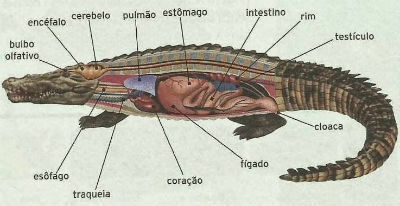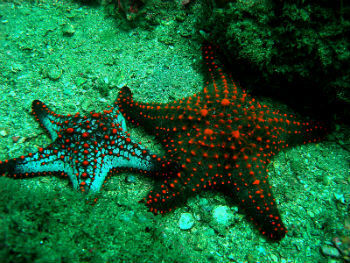Living beings have general characteristics that allow them to be distinguished from non-living beings.
We often hear that living things are born, grow, reproduce and die. However, there are fundamental characteristics or functions that together can define what we call life.
Below, we describe 12 of the features that allow to identify a living being.
1. cell organization
Living things are made up of cells. They can have one cell (single-celled beings) or several cells (multicellular beings).
Cells are highly organized structures and work in coordination. In multicellular beings, similar cells combine to form tissues, which participate in the construction of organs. A higher organization is the formation of organ systems.
Most authors indicate that all living beings are formed by a functional and structural unit: a cell. According to cell structure, living organisms can be simple, like bacteria, or complex, like humans. Viruses are considered by many scholars as living beings, but they are the only ones that do not have cells.
2. Chemical composition
Living beings are basically formed by a combination of chemical elements, called bioelements or biogenic elements, which constitute living matter.
The periodic table groups the 118 known chemical elements and of these, carbon (C), oxygen (O), hydrogen (H) and nitrogen (N) are the primary bioelements.
The primary bioelements plus phosphorus (P) and sulfur (S) constitute approximately 98% of a living being's body mass.
3. Metabolism
All living beings have metabolism, which corresponds to the junction of all interconnected chemical reactions within an organism.
The purpose of metabolism is to control energy and material resources to meet the needs of a living being. The various reactions in a cell keep it alive, with the ability to grow and divide.
Metabolism can be classified into two major processes: anabolism (synthesis or construction reactions) and catabolism (degradation or breakdown reactions).
know more about Anabolism and Catabolism.
4. growth and development
Living beings grow throughout life and increase in size or dry mass (regardless of body water). Consequently, the number of cells in the body increases.
Growth and development follow patterns that involve genetics, hormones, nutrition and metabolism. Cells can undergo an increase in volume (hypertrophy) or multiplication that gives rise to new cells (hyperplasia).
5. reproduction
Living beings are able to reproduce and increase the number of components of their species through their descendants. This ability to reproduce can occur in different ways, depending on the organism.
Single-celled beings duplicate their genetic material and divide, giving rise to new cells from a mother cell. Multicellular beings, on the other hand, have cells that are specialized in reproduction, which are called reproductive germ cells.
Reproduction can be classified as sexual, by the union of the parents' gametes, or asexual, which forms genetically identical organisms.
know more about sexual reproduction and Asexual Reproduction.
6. Heredity
THE heredity it can be defined as the ability to transmit genetic information between individuals of the same species so that their characteristics are maintained from one generation to another.
This information is transmitted through genes, functional units of heredity, which consist of sequenced fragments of DNA.
7. Nutrition
Living organisms need food to acquire nutrients and energy for their survival. According to nutrition, living beings are classified as autotrophic and heterotrophic.
Autotrophic beings are able to produce their food from lifeless materials through processes such as photosynthesis and chemosynthesis. On the other hand, heterotrophic beings are nourished from other living beings, removing organic molecules.
Also read about the Nutrients.
8. energy processing
Living beings need a source of energy to survive and carry out cellular activities.
THE cellular respiration it is a chemical reaction that takes place within cells and is responsible for releasing the energy absorbed through food.
In this process, nutrient molecules break down and the energy released is used by the cell to perform its functions.
In plants, for example, the energy absorbed from the sun is transformed into food through photosynthesis.
9. Irritability
Living beings are capable of reacting to stimuli and detecting changes in the environment in which they are inserted. This characteristic is called irritability.
The responses to received stimuli can be positive, when the response is given towards the stimulus, or negative, so that the being moves away from what was detected.
Sensitivity is different from irritability. Sensitivity is a unique characteristic of animals, which can respond in different ways to a stimulus.
10. Movement
Living beings are able to move around, leave a place or change position. For example, animals can travel distances as they move around, and plants bend toward the sun.
Movement can be perceptible by external movement, as a reaction to stimuli, or it can occur with structures within the organism itself. Therefore, movement is necessary for the maintenance of life.
11. homeostasis
THE homeostasis, interpreted as “stable state”, is the mechanism that ensures that the internal conditions necessary for the organism to function are kept constant.
Temperature and concentration of chemical substances are examples of regulated factors in living beings.
12. evolution and adaptation
Biological evolution is part of the adaptation of living beings. A living thing can go through a modification process to help it survive in the environment and continue the species.
THE evolution it is related to the diversity of living beings, in a process of development from a common ancestor or natural selection. Adaptation can be seen as a defense strategy for the maintenance of the species, as is the case of camouflage.
See too:
- What are living beings?
- living beings and non-living beings
- classification of living beings
- Exercises on classification of living beings



